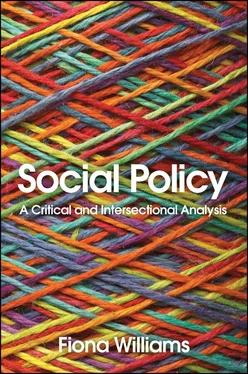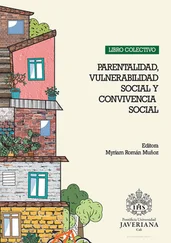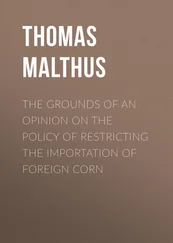1 ...6 7 8 10 11 12 ...21 Third, and more widely still, by the end of the 1990s and into the new century, neoliberal marketized, managerialized and modernized social policies had taken hold, trade unions were weakened in many countries, and there was a decline in local new social movement activism. Although the profiles of social movements dimmed, they did not go away. Activism around disability, sexual citizenship and rights for migrants, for carers, older people and children and environmental policy, influenced pressure-group activity over this period and was reflected in social policy research. There were important struggles against racism with the first recognition of institutionalized racism in the police force, although these were very hard fought and often on the back foot (Macpherson 1999). There was the declaration of women’s rights at the Beijing Conference in 1995 and the beginning of important moves for gender equality and anti-racist policy in the EU (Hoskyns 1996; Williams 2003). By 2004 in the UK, civil partnerships for same-gender relationships and gender recognition for transgender people became legal, as did same-gender marriage in 2013 (except for Northern Ireland). The Kyoto Protocol of 1997 led to a raft of climate change and energy legislation from, in the UK, 2004 onwards, while environmentalist critiques and some of the arguments for a citizens’/basic income began to identify the limits of assuming a future based on continuing economic growth and productivism (Fitzpatrick and Cahill 2002). Preparation went on for the UN Convention on the Rights for Persons with Disabilities, which was passed eventually in 2006. In some ways, these developments indicate how feminist, anti-racist and other activists were moving higher up the political hierarchy from their bases in the grass roots into EU and international NGO politics as well as horizontally into more transnational coalitions (Watkins 2018).
Fourth, at the national level, both culturally and politically, particularly in the emerging ‘Third Way’ politics and New Labour, there was a different shift – away from what were considered ‘out-dated’ conflicts of both the social democratic politics of class and redistribution and the politics of the new social movements, especially feminism and anti-racism: ‘post-feminist’ and ‘post-racial’ became new political catchwords (see chapter 4). John Denham, a former secretary of state in the New Labour government, said in 2010 that it was ‘time to move on from “race”’, and Theresa May, as Conservative home secretary and later prime minister, went further, to say that ‘equality is a dirty word’ (both cited by Craig et al. 2019: 1). For others, it was political correctness that had gone ‘too far’, or cultural diversity that had undermined class solidarity and (mythical) national homogeneity (Alesina and Glaeser 2004; Goodhart 2004). Gail Lewis’s study of local government policies in the 1990s termed this as a ‘blind-eye’ of successive governments to the issue of racism (Lewis 2000), and a study done almost two decades later on the struggles of minority ethnic women identified this as ‘political racelessness’ (Bassel and Emejulu 2018; and see chapter 5).
Fifth, back within the study of social policy, several further dynamics were significant. One was that paid work became the central social policy referent to welfare reforms in much of Europe and the US, providing the financial and moral imperative to get everyone – men, women, disabled, minority ethnic groups – ‘off welfare and into work’. This shifted the axis in what was important in ‘the social’ (Williams 2001). In so far as there is a longstanding predisposition of social policy research, as well as independent policy research organizations, to investigate the agenda framed by governments (Taylor-Gooby and Dale 1981), then from the turn of the century much of this focused upon the priorities of government and EU reforms – a social investment approach which saw opportunities for paid work for women and disabled people and minority ethnic groups as a way to minimize social exclusion and promote multi-ethnic integration. The combined effect was that much useful empirical work was produced, but the focus of inequalities became narrowed into issues of discrimination, social inclusion, community cohesion and integration.
At the same time, another rather different factor in the social sciences more generally was that the academic studies of gender, race, ethnicity, migration, disability, age, sexuality, childhood, youth, age and eco-social policy themselves became disparate, specialist and siloed. And this too was reproduced in social policy studies. The effect of these two dynamics was that single categories of gender, race, etc., came to signify specific descriptors, stand-alone critiques or measures of diversity rather than as challenges to the theoretical underpinnings of what stands for universalism in welfare. Of course, it is also the case that these critiques have themselves needed to stand alone in order to pursue more deeply the specificities of their intellectual journeys, but this separation was influenced by other developments. It was not simply that the fragmentation of social movements was mirrored in the social sciences, or, as some have argued, that feminism’s critique of the state dovetailed with neoliberal policies to wither the state, or that feminism was lured into individualist empowerment strategies (Fraser 2009). It was that critical diversities became siloed because the demands of managerialized universities required more intensive academic specialization (defining and leading a new area of study, setting up a specific journal, etc.) for both research assessment purposes and individual career advancement. On the other hand, this separate but parallel existence has not been a one-way movement. Marginalization happens when barriers exist, intellectual or otherwise. It is this that the demands decolonizing the universities challenge (Bhambra et al. 2018; Andrews 2015).
This marginalizing tendency is no worse in social policy than in other social, economic and political sciences. Indeed, as a disciplinary space it can be more propitious: its very eclecticism gives it greater openness to new ideas. Paradoxically, however, its general commitment to social justice can also render it complacent (Phillips and Williams 2021). Feminist scholarship in particular has a high profile in social policy. Yet, at the same time, its frames of analysis still stand at a conceptual distance from core theories. It should be said that, even here, it is the intersection of gender with class that dominates, with only sporadic forays into critical disability, race and queer theories.
Having explained the continuing marginalization of these critical developments, I want to turn this argument around now to make the case for how they need to be central to social policy. One way of doing this is by providing a strategy to bring together their common analytical and transformative strengths in a manner that can also recognize their specific arguments but avoid the siloing effects mentioned here. I assess first the relevance of an intersectional approach in enabling this.
An intersectional approach for social policy
Intersectionality provides an understanding of social inequalities and power as complex, interlinked, shifting and multifaceted, constituting both penalties and privileges. In other words, our experiences of power and inequality are constituted not simply by, say, our gender identity or our racialized and class positionings but also by the multiple places we occupy on the many salient and changing axes of power that exist at any given time. Importantly, it is an approach in which analysis and political practice are closely linked. The concept has a long history emerging from black feminist struggle and critical race studies.
Читать дальше












